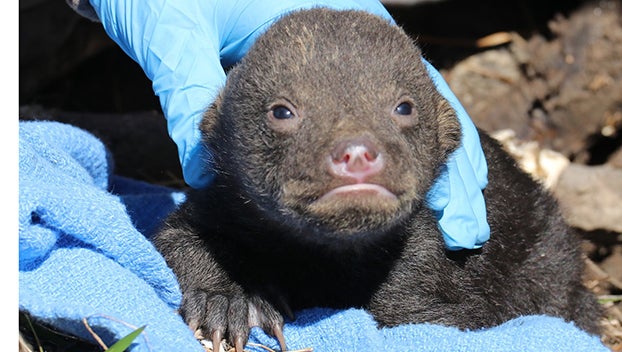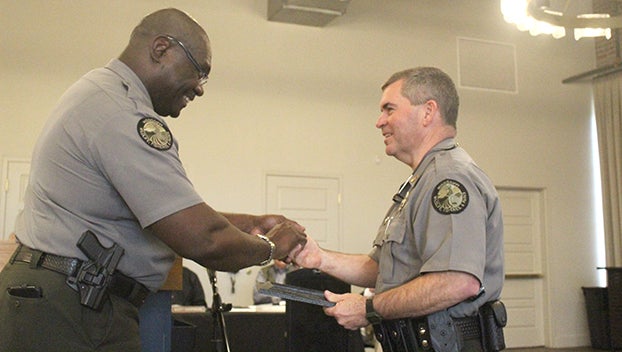Bear Week: Cubs start out small
Published 5:08 pm Thursday, March 30, 2023

- A bear cub is fitted with a PIT tag which will help biologists know when and where the cub was born as it grows up. Mississippi is home to a growing population of black bears. (Courtesy Photo | Mississippi Department of Wildlife, Fisheries and Parks)
JACKSON — Mississippi Department of Wildlife, Fisheries and Parks are still celebrating Bear week this week. Mississippi is home to around 150 black bears and the population is continuing to grow.
Bears once called Mississippi home before over hunting and loss of habitat lowered their numbers to endangered levels.
In 2002, the state started its black bear program and has since seen the population once thought to be fewer than 50 grow to 150 and possibly higher. Anthony Ballard, black bear program director, said their numbers have risen. Black bears mostly live in the Mississippi Delta, Southwest Mississippi and the Mississippi Gulf Coast.
Part of the increase in population is due to more and more breeding females in Mississippi’s population. Cubs are the focus of Thursday’s posts on social media by the MDWFP. The department picked up after yesterday’s story about collaring bears in their dens.
When female bears are sedated in their dens any cubs are also worked on by the team of biologists. They photograph the cubs, collect measurements and implant a PIT tag. These tags can be scanned to identify cubs as they grow up.
“If that cub is ever captured again as an adult, biologists will know exactly when and where it was born,” MDWFP writes.
Something fascinating about black bears is they are able to have delayed implantation. Female black bears breed in June or July but a fertilized egg will not implant until January.
MDWFP writes that females are then able to accumulate fat reserves and find the perfect den due to this delayed implantation. Cubs are born about six to eight weeks later and will emerge from the den with the mom in April or May. Sows can give birth to 1-to-5 cubs but typically it is just 2-to-3 cubs. At birth, cubs weigh about eight ounces.
Did you know you can report black bear sightings in Mississippi and view an interactive map which shows where bears have been seen in the state. Visit MDWFP.com and go to the Black Bear Program webpage to learn more.





